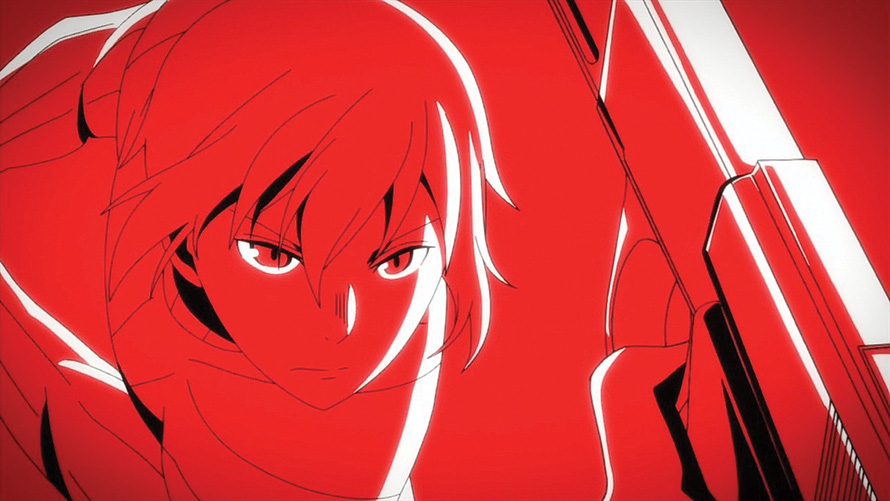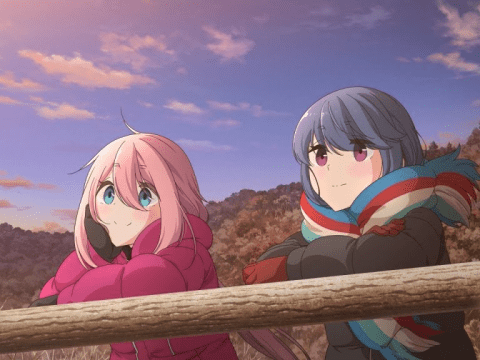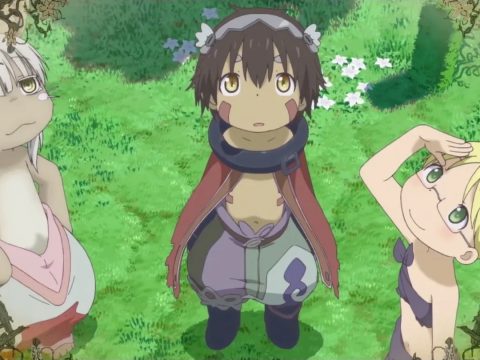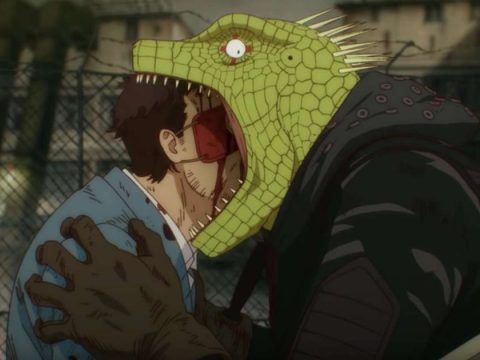
Easy Rider
There are very few series in the history of anime as simultaneously gentle and violent as Kino’s Journey. The 2005 anime series and its film and OVA counterparts adapted Keiichi Sigsawa’s light novels with a heavier eye to the former, though never truly undercutting the drama and action of the journeys.
In Egg Firm’s 2017 adaptation, we see a slightly different take: still gentle, still beautiful, but with a keener eye toward depicting extremes of emotion within the setting. It takes more risks than its predecessor when it comes to blood spray and action scenes. At the same time, it tends to do a good job landing the delicate balance between calm observation and overall unease that defines Kino’s various journeys.

Kino’s Journey in all its forms doesn’t so much tell a story as create a universe, with Kino and Kino’s motorrad Hermes—a talking vintage motorcycle that’s equal parts vehicle and road trip buddy—as the central hub from which our understanding of the show’s universe spreads. We meet new people and experience some character development across multiple episodes, but it’s mostly a sandbox world we dip into at random spots.
Kino is a “traveler,” understood in this setting to be almost a social class unto itself. Travelers devote their lives to seeing the world, which is divided up into “countries” (by and large more like towns) separated from each other by long stretches of road. The life of a traveler is largely one of observation, especially in Kino’s case. The human/motorrad pair will stay only a few days in each country, observing its customs and more often than not finding themselves in hot water thanks to some weird law or other.

They aren’t the only travelers we meet, though. In between Kino and Hermes’s own adventures, we’ll stop in on travelers past, present, and future. We watch Shizu overcome his own troubled past and slowly build a traveling group as he looks for a place to settle down. We see the turbulent beginning and happy ending of a girl simply known as Photo. And we take a step back in time to watch Kino’s own Master as she and an accomplice raise hilarious hell in a police state. We also see Kino’s own origin story, with the late-series episode “The Country of Adults.”
People new to Kino’s Journey in any of its forms will likely be most surprised by where and when it casts judgment on its weekly subjects. Kino travels to a country where people are forced to fight to the death for citizenship, one where every citizen is a liar (albeit for a “good reason”), and even a mobile country that must steamroll everything in its path in order to maintain its idyllic nature. While Kino rarely stays “hands off” for long, it’s a rare and special occasion when our protagonist decides to be the arbiter of change in a country. Upon leaving, Kino’s thoughts are rarely of whether the citizens were right or wrong in what they did, but rather what their behavior says about them—and about humanity as a whole.

In the end, we—like Kino, Hermes, Shizu, and the rest—are invited to do one thing during this series: observe. The animation is absolutely beautiful, especially the natural landscapes, complemented with classically styled musical motifs. The scenes in which our various travelers are between countries are some of the most soothing scenes in modern anime: truly a beautiful world.
Simultaneously, when it comes to the characters of the week, we’re asked to sit back and think. It can be very easy to jump to take a side, and it’s something we as viewers are used to doing. But we take the most away from Kino’s Journey—The Beautiful World if we engage in it as Kino does: by observing the intricacies of human behavior, and using those observations as a lens through which to observe our own place in the world.
Studio/company: Funimation
Available: Now
Rating: 14+
This story appears in the April 2019 issue of Otaku USA Magazine. Click here to get a print copy.





![SSSS.Dynazenon [Anime Review] SSSS.Dynazenon [Anime Review]](https://otakuusamagazine.com/wp-content/uploads/2021/08/16-9-SSSS.Dynazenon_Key_Visual_3.5-480x360.jpg)

![Back Arrow [Anime Review] Back Arrow [Anime Review]](https://otakuusamagazine.com/wp-content/uploads/2021/07/ba15-02686-480x360.jpg)